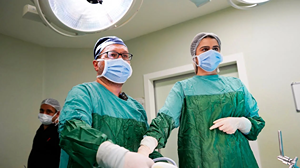Introduction
In recent years, the landscape of healthcare has undergone significant changes, leading to a rising trend in medical malpractice incidents. As patients become more aware of their rights and the standards of care they should expect, cases of medical malpractice have surged. This article delves into the various aspects of medical malpractice, exploring its prevalence, consequences, and the essential measures needed to mitigate risks for patients and healthcare providers alike.

Understanding Medical Malpractice
Medical malpractice refers to a situation where a healthcare professional fails to provide the requisite standard of care, resulting in harm or injury to a patient. To establish a case of medical malpractice, several key elements must be demonstrated:
- Duty of Care: The healthcare provider had a legal obligation to adhere to the established medical standards and provide care. Breach of Duty: The provider failed to meet those standards. Causation: This breach directly caused injury or harm to the patient. Damages: The patient suffered actual damages, which can include physical injury, emotional distress, or financial loss.
Types of Medical Malpractice
Medical malpractice can occur in various forms, including but not limited to:
Diagnostic Errors: Misdiagnosis or delayed diagnosis can lead to improper treatment, worsening a patient’s condition. Surgical Errors: These include performing surgery on the wrong body part or leaving surgical instruments inside a patient. Medication Errors: Prescribing the wrong medication or incorrect dosages can have severe consequences for patients. Childbirth Injuries: Negligence during labor and delivery can result in serious harm to both the mother and the child.
The Rising Statistics of Medical Malpractice Incidents
Recent studies have shown an alarming increase in medical malpractice cases. The National Practitioner Data Bank (NPDB) reported that the number of malpractice payments has steadily risen over the last decade. The reasons behind this trend can be attributed to various factors, including:
- Increased Patient Awareness: Patients are now more informed about their health rights and are increasingly willing to pursue claims for malpractice. Higher Expectations: Advances in medical technology have raised expectations for successful outcomes, leading to greater scrutiny of healthcare practices. Complexity of Healthcare: As medical procedures become more complex, the potential for errors increases, thereby raising the likelihood of malpractice incidents.
Impacts of Medical Malpractice
The repercussions of medical malpractice extend beyond the immediate harm to patients. The impact can be far-reaching and profound:
Emotional and Psychological Effects: Victims of medical malpractice often experience significant emotional distress, anxiety, and depression on top of their physical injuries. Financial Burden: Malpractice not only affects the patient’s health but can also lead to steep medical bills, lost wages, and long-term care expenses. Legal Ramifications: Healthcare providers face the risk of litigation, which can damage their professional reputation and result in financial loss.
Preventing Medical Malpractice
While some degree of risk is inherent in medical practice, there are several measures that healthcare providers can adopt to minimize the likelihood of malpractice incidents:
- Effective Communication: Clear communication between healthcare providers and patients can significantly reduce misunderstandings and errors. Continuing Education: Ongoing training helps medical professionals stay updated on best practices and emerging trends in patient care. Implementing Protocols: Standardizing procedures and protocols within medical facilities can help reduce variability and the chances of errors.
The Role of Legal Representation
For patients who believe they have been victims of medical malpractice, securing competent legal representation is crucial. Attorneys specializing in medical malpractice will typically:
- Evaluate the merits of the case based on the evidence and documentation provided by medical records. Gather expert testimony from qualified professionals to support the case. Negotiate with insurance companies to arrive at a fair settlement or represent clients in court if necessary.
The Importance of Bearing Responsibility
Healthcare professionals must acknowledge their responsibility in preventing medical malpractice. By fostering a culture of accountability, they can improve patient safety and outcomes.
- Reporting Mistakes: Encouraging staff to report errors without fear of retribution can help identify systemic issues. Peer Support: Adopting a collaborative environment where providers support one another can lead to better collective outcomes.
Conclusion
The rising trend of medical malpractice incidents underscores the critical need for awareness, prevention, and accountability in the healthcare sector. As patients become more knowledgeable about their rights and the standards they should expect, healthcare providers must step up to http://chiropractic-negligence-safety-tips-summary.tearosediner.net/a-healing-touch-restoring-dignity-in-medical-malpractice-victims meet these expectations through enhanced communication, education, and ethical practice. Addressing the root causes of medical malpractice will not only enhance patient safety but will also safeguard the integrity of the healthcare profession as a whole.
Through collaboration between healthcare providers, patients, and legal representatives, the incidence of medical malpractice can be significantly reduced, leading to a safer and more trustworthy healthcare environment for future generations.